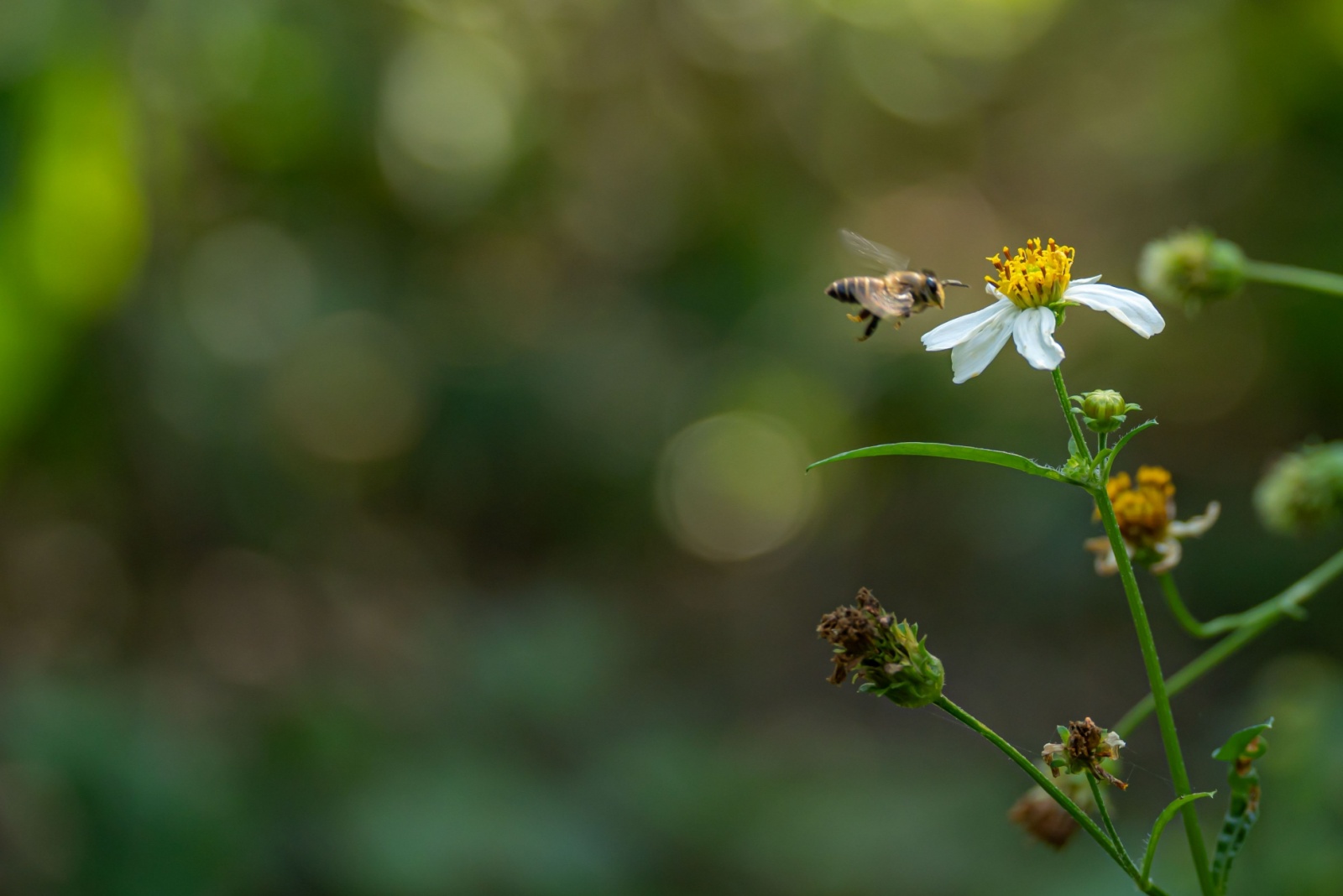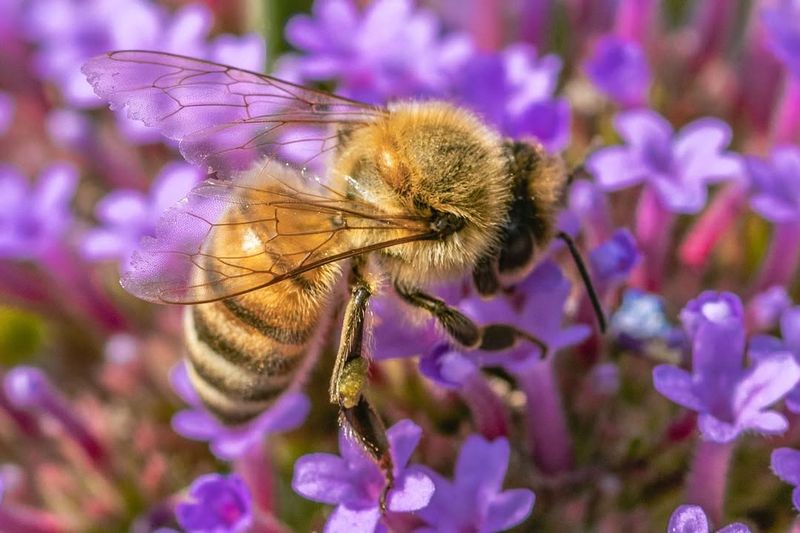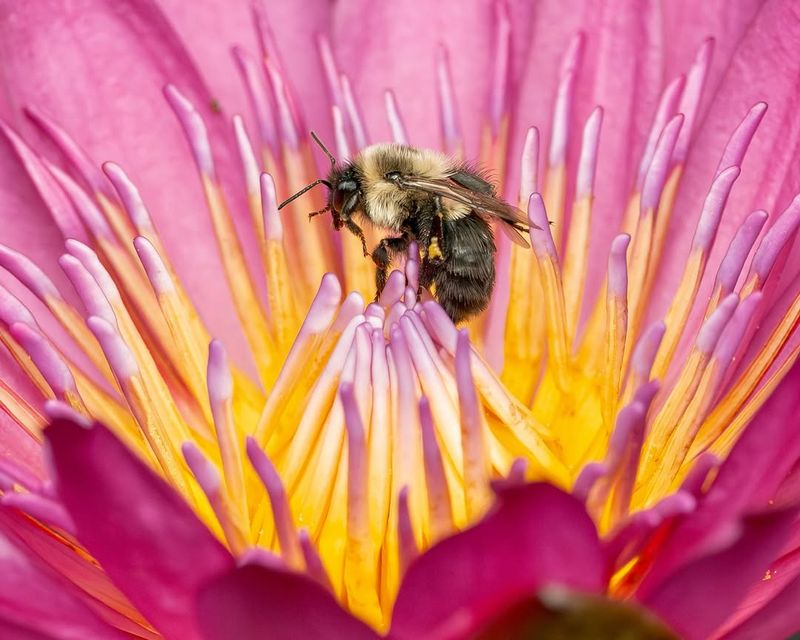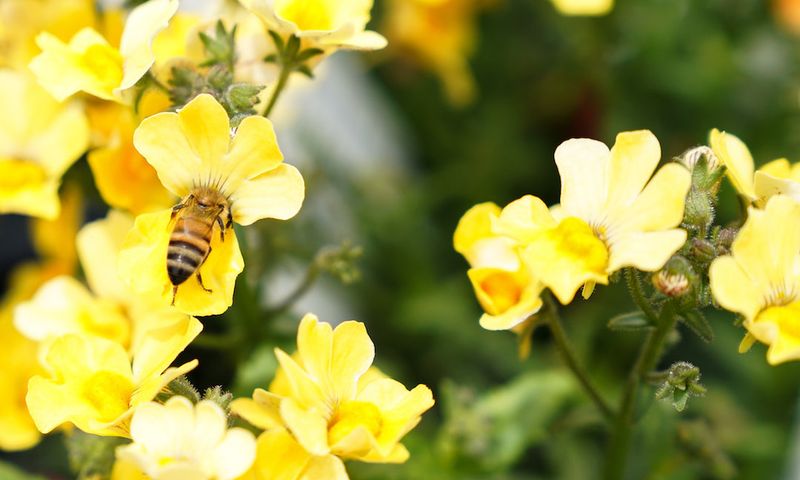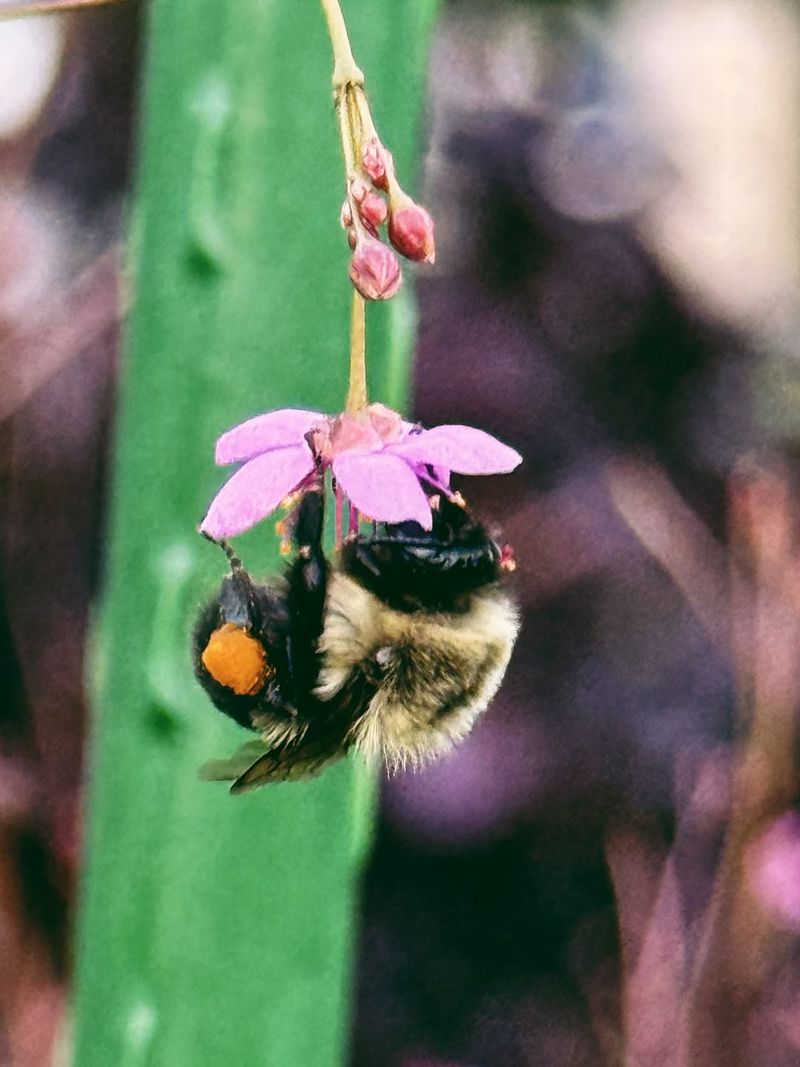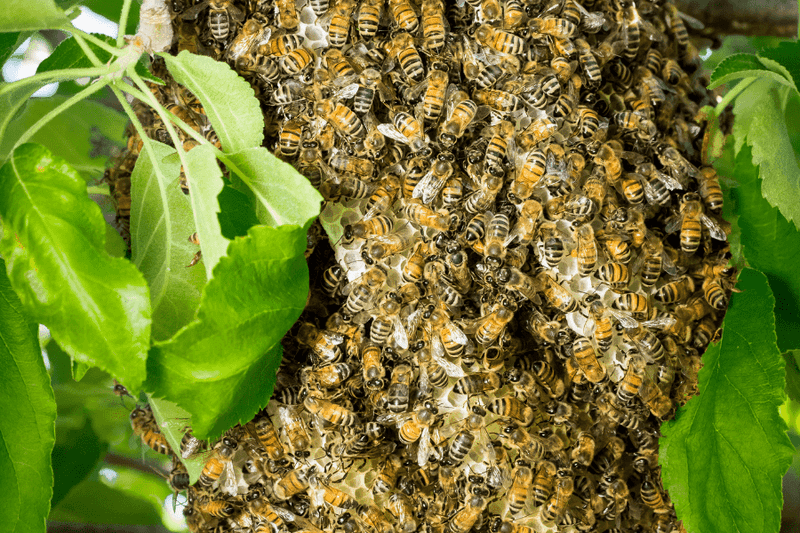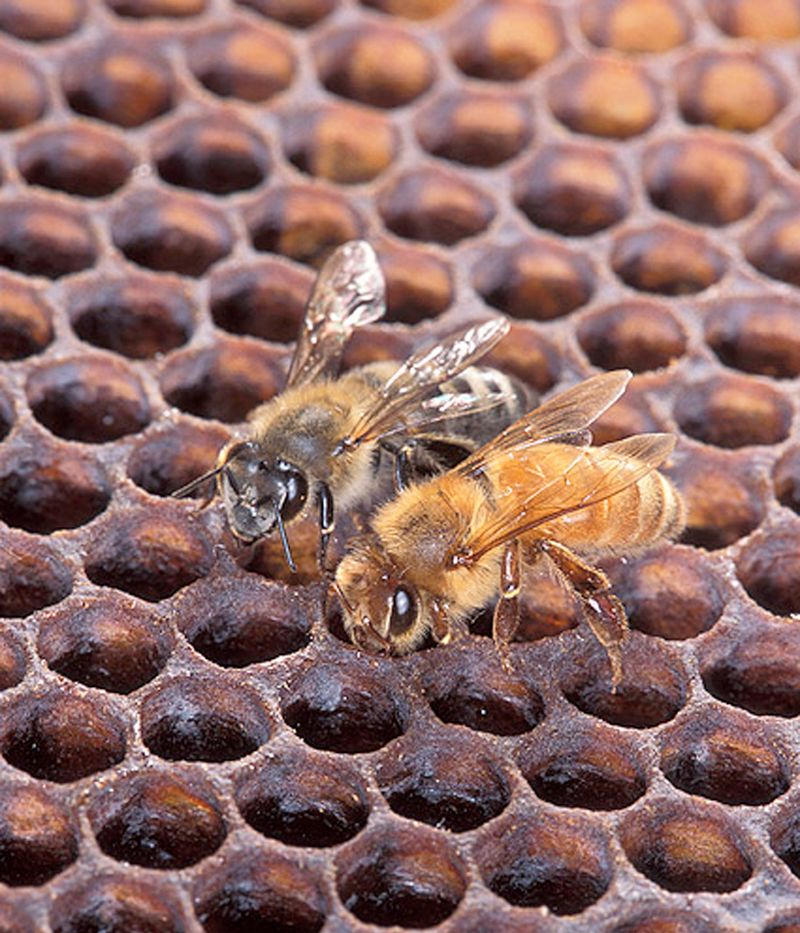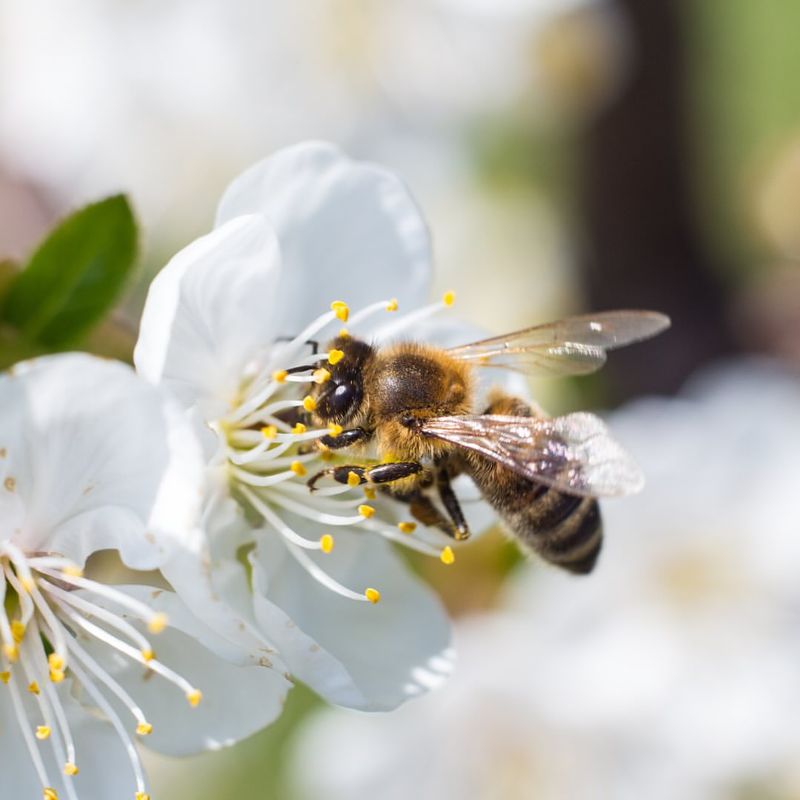Bees are some of the hardest workers in nature, pollinating plants that give us fruits, vegetables, and beautiful flowers. But across Florida, bee populations are shrinking at an alarming rate, and scientists are worried about what this means for our food supply and environment.
Understanding why bees are vanishing helps us take action to protect these tiny but mighty creatures that keep our ecosystems healthy and thriving.
1. Pesticides And Chemical Use
Farmers spray chemicals on crops to kill harmful bugs, but these same pesticides can hurt or kill bees too. Neonicotinoids are especially dangerous because they attack bee nervous systems, making them confused and unable to find their way home.
When bees drink nectar from treated flowers, they carry poison back to their hives. Even small amounts can weaken entire colonies over time, making them sick and less able to survive Florida’s hot summers and find enough food.
2. Habitat Loss And Urban Development
Florida’s population keeps growing, which means more houses, shopping centers, and roads get built every year. Wild areas filled with native flowers and plants disappear, leaving bees with nowhere to nest or find food.
Without diverse habitats, bee colonies struggle to survive. They need different types of flowers blooming throughout the seasons to stay healthy and strong. Urban sprawl creates food deserts for bees, forcing them into smaller patches where competition for resources becomes intense and survival gets tougher daily.
3. Climate Change And Extreme Weather
Rising temperatures and unpredictable weather patterns mess with the natural timing bees depend on for survival. Flowers might bloom earlier or later than usual, creating mismatches when bees emerge from winter dormancy expecting food.
Hurricanes, floods, and droughts have become more common in Florida, destroying hives and wiping out food sources. Extreme heat stresses bees physically, making them work harder to cool their hives instead of gathering nectar, which weakens colonies and reduces their chances of making it through difficult seasons.
4. Varroa Mites And Parasites
Tiny parasites called varroa mites latch onto bees like vampires, sucking their blood and spreading deadly diseases throughout hives. These reddish-brown pests are barely visible but cause massive damage to bee populations worldwide.
Infected bees become weak, deformed, and die young, unable to perform their jobs collecting pollen or caring for baby bees. Florida’s warm climate lets these mites reproduce quickly year-round, making them particularly hard to control compared to colder states where winter naturally reduces their numbers significantly.
5. Diseases And Pathogens
Bacterial and viral infections spread rapidly through bee colonies, attacking their immune systems and causing mysterious die-offs. American foulbrood and deformed wing virus are particularly nasty, killing developing bees before they even hatch or leaving survivors too crippled to fly.
Colony Collapse Disorder remains one of the biggest mysteries, where worker bees suddenly abandon their hives, leaving queens and babies to die. Scientists believe multiple stressors combine with pathogens to overwhelm bee defenses, creating perfect conditions for total colony failure across Florida apiaries.
6. Invasive Species Competition
Aggressive Africanized honeybees have spread throughout Florida, competing with native species for food and nesting spots. These invaders are more defensive and adaptable, often pushing gentler native bees out of prime territory.
Fire ants also pose serious threats, attacking bee hives and eating larvae whenever they get the chance. Native bees evolved without these competitors, so they lack defenses against such aggressive invaders.
Competition for limited resources becomes fiercer, forcing some native species toward extinction while struggling populations decline further each year.
7. Poor Nutrition And Monoculture Farming
Imagine eating only bread for every meal—you’d get sick pretty quickly! Bees face similar problems when farms grow just one type of crop across huge areas, eliminating plant diversity they need for balanced nutrition.
Orange groves and strawberry fields dominate Florida agriculture, but these provide food only during short blooming periods.
Without varied flowers offering different vitamins and proteins year-round, bee immune systems weaken, making them vulnerable to diseases and unable to raise healthy young that can sustain colonies through challenging times ahead.

